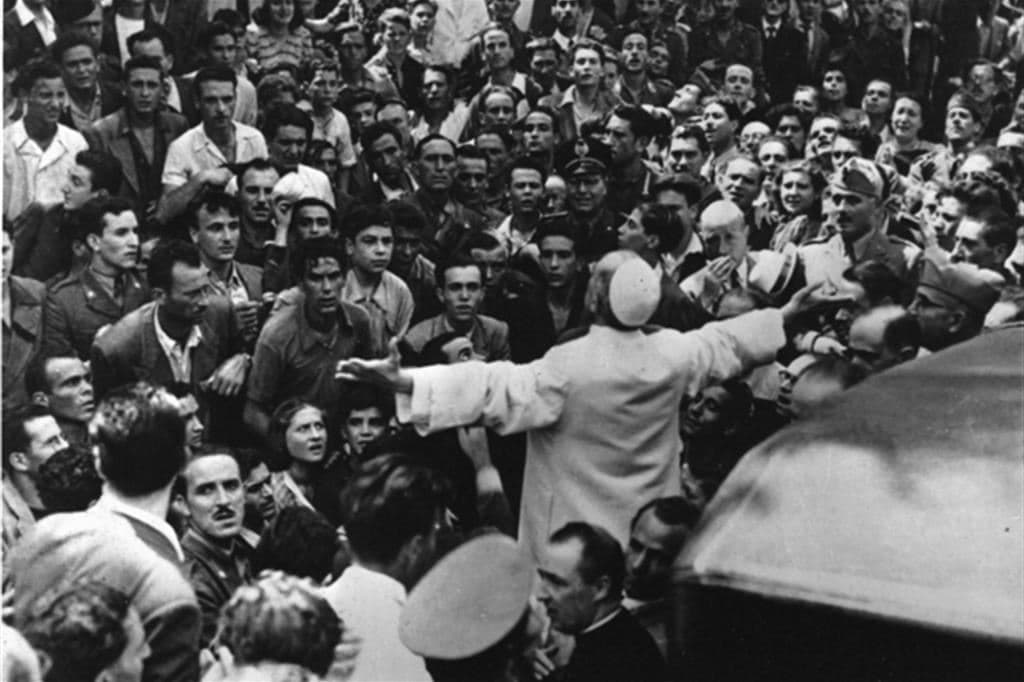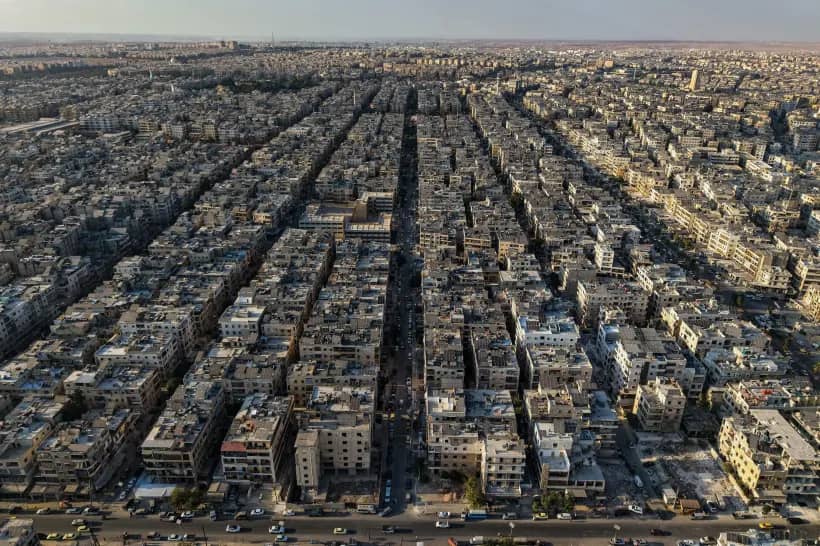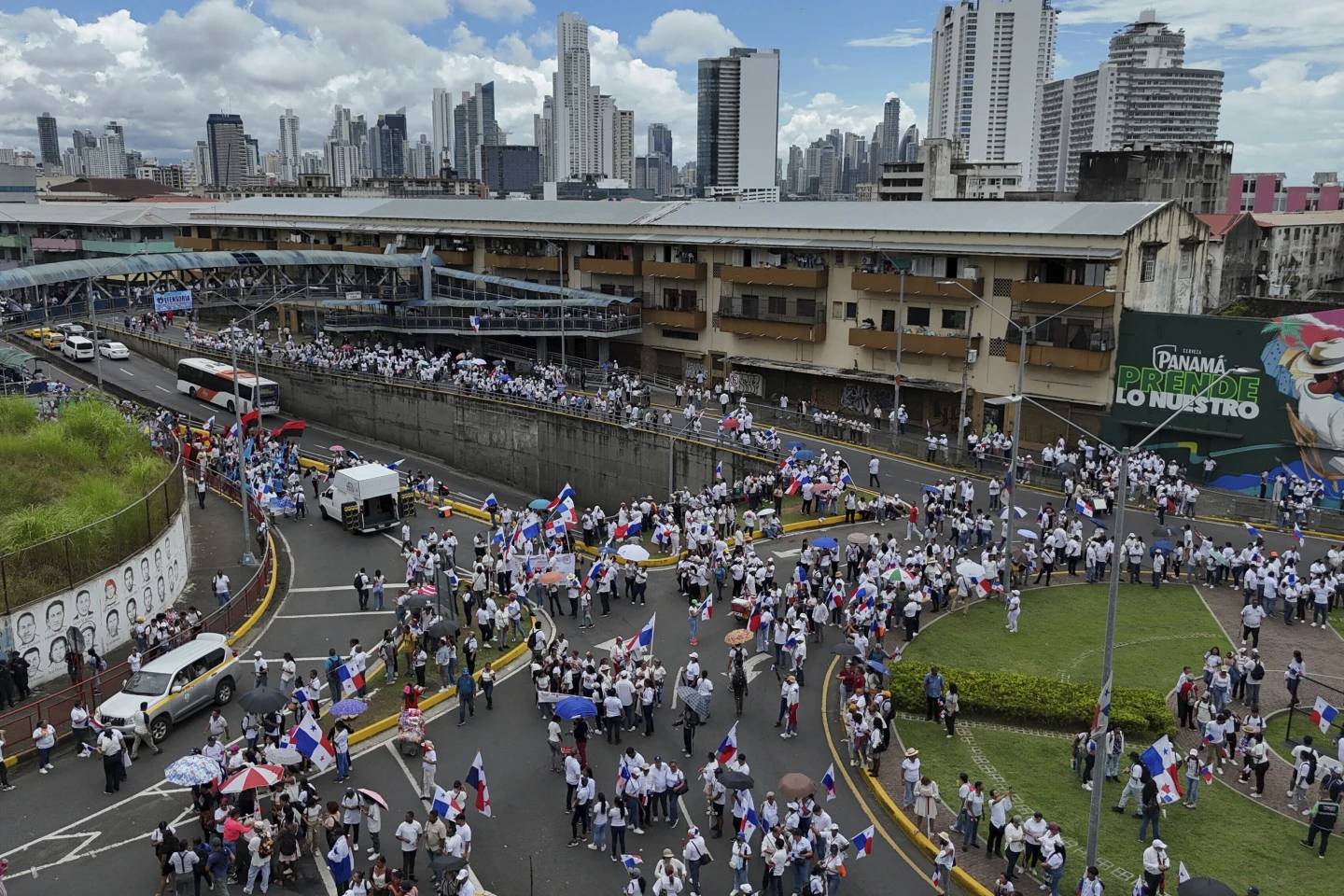ROME – Rome is a city that prides itself on having seen it all over the course of its millennia-long history, so much so that “Been there, done that” might well be the unofficial civic motto. Here’s how journalist Fabrizio Roncone summed up Roman reaction to the record heat this week, which reached an official peak of 109 degrees on Tuesday.
“Romans don’t get burned, they don’t melt, they don’t evaporate. The Romans resist. They’re used to it … not to the heat, but to much worse,” Roncone wrote in Corriere della Sera.
Yet even by that world-weary standard, the events of July 19, 1943, exactly 80 years ago yesterday, shocked and scarred the city like little else in its long history – and, for precisely that reason, a virtually unprecedented papal reaction that day still lives in the civic memory.
It was 11:03 a.m. on July 19, 1943, when some 500 American planes under the command of General James “Jimmy” Doolittle began dropping more than 4,000 bombs on the Eternal City, altogether amounting to more than 1,000 tons of explosives. The worst damage came to the Roman neighborhood of San Lorenzo, home of the famed Basilica of San Lorenzo fuori le mura (“St. Lawrence Outside the Walls”), which is adjacent to the massive Campo Verano cemetery.
American forces had landed on Sicily just a few days before the bombing raid and would soon begin making their way north, so the idea of the raid was to weaken Mussolini’s grip on power and encourage Italy’s partisans to rise up and support the Allied effort.
In the end, the raid of July 19 would leave 3,000 people dead, 11,000 injured, 10,000 houses destroyed and at least 40,000 Romans homeless.
Most dramatic for Roman consciousness was the near-destruction of the basilica, which, in various forms, had occupied the spot near the traditional tomb of St. Lawrence since the fourth century. Prior to that point, Romans had believed the city would be spared the worst of the war’s carnage because of its artistic and spiritual patrimony, but the raid shattered that illusion.
Romans were left dazed and terrified, feeling suddenly vulnerable. Into that mix stepped Pope Pius XII, Eugenio Pacelli, the last native Roman to be elected pope, and thus someone who could instinctively read the mood of the city.
Pius XII immediately decided to set off to visit the site of the destruction at San Lorenzo, arriving at 2:00 p.m., according to a local pastor who saw the pontiff’s car pull up. The timing is important, because according to after-action reports by American pilots, the last bombs weren’t dropped until 2:30 p.m., which means the pope showed up while the raid was still underway.
This was an era in which popes rarely left the Vatican for any reason, and certainly not in the middle of an active bombing campaign. Adding to the risk, Pius XII did not arrive amid a scrum of security personnel, but was accompanied by only two people: Count Enrico Pietro Galeazzi, a Roman architect, diplomat and personal friend of the Pacelli family, who drove the pope in his Fiat, and then-Monsignor Giovanni Battista Montini, an aide to Pius XII who would go on to become Pope Paul VI.
(As a footnote, Galeazzi would later design the chapel at the Pontifical North American College, the residence for American seminarians in Rome, and his tomb is located there.)
How dicey was the decision to travel the four miles between the Vatican and San Lorenzo while the bombers were still in the sky? Consider that another car carrying the head of the Carabinieri, Italy’s military police, who was also trying to visit the site at San Lorenzo, was struck by a stray bomb and General Azolino Hazon was killed trying to make basically the same journey.
Among other things, Pius XII undoubtedly was motived to visit the site in part because the Pacelli family crypt is located near the entrance to the Campo Verano, and it too was damaged.
The pope’s visit was not announced, but word quickly got out and a massive crowd of survivors and residents of the neighborhood formed around him. Witnesses reported seeing the pope’s white cassock stained with blood as he prayed with the crowd and blessed them, consoling them for their losses.
A photograph of Pius XII standing in front of the crowd with his arms stretched out, as if imploring heaven to spare them and the city further anguish, quickly became the iconic image of the visit, and is memorialized in a nearby statue in the Campo Verano. (Today historians believe that particular photo was actually from a later moment, but it’s still passed into the popular mind as the day’s defining moment.)
More than any other single factor, it was Pius XII’s courage and pastoral presence on July 19, 1943, which earned him the epithet of Defensor Civitatis, “Defender of the City.” So moved was Pius by the experience that he actually hoped to be buried at the Basilica of San Lorenzo, which proved impossible in the end because of the damage the basilica had endured.
Pius XII would repeat the gesture a month later, on August 13, 1943, when Allied bombs again fell on another section of Rome, in the San Giovanni neighborhood. (Ironically, Pope Pius was already in the area to celebrate a previously scheduled Mass for the victims of July 19.) Aside from those two bombings the city was spared further ruin, a result many Romans to this day attribute to Pius XII’s public displays of concern.
In his Angelus address last Sunday, Pope Francis recalled the remarkable gesture by his predecessor.
“I want to recall that 80 years, on July 19, 1943, certain neighborhoods of Rome, especially San Lorenzo, were bombed, and the pope, the Venerable Pius XII, wanted to be in the middle of his shocked people,” Francis said.
“Unfortunately, even today these tragedies repeat themselves,” Francis said. “How is it possible? Have we lost memory? May the Lord have mercy on us, and free the human family from the scourge of war. In particular we pray for the dear Ukrainian people, who are suffering so much.”
In other words, that unplanned, unscripted and clearly risky moment from 80 years ago lives on, as a permanent reminder that while war may still be with us, so too is a dramatic papal witness for peace.
Follow John L. Allen Jr. on Twitter: @JohnLAllenJr















